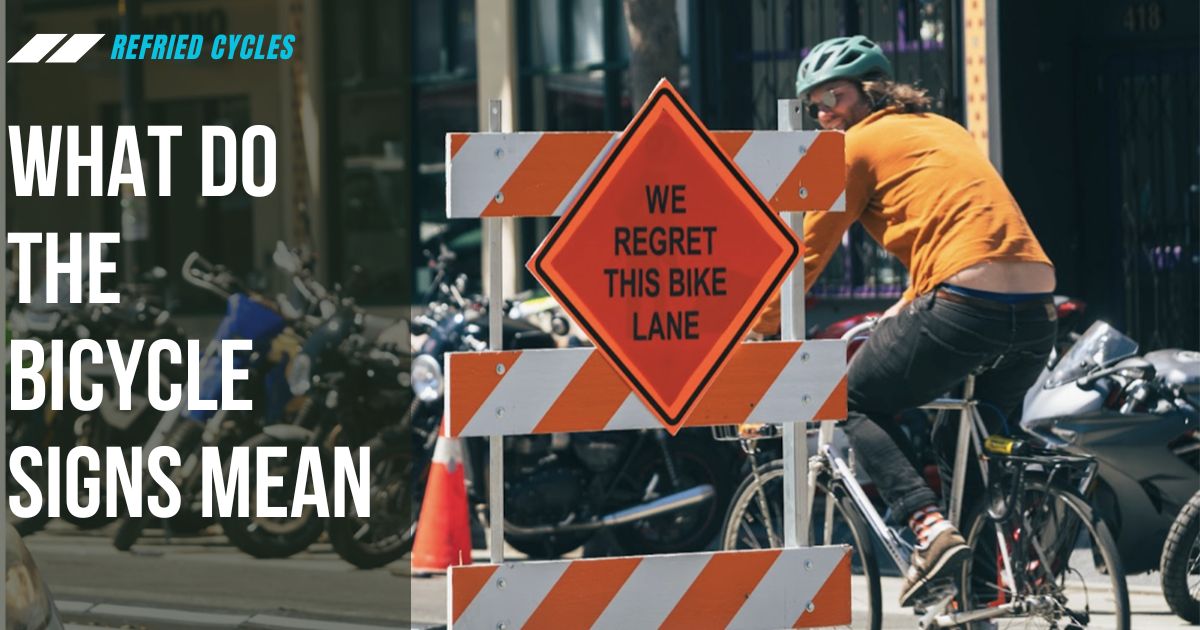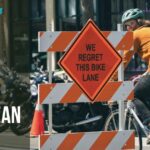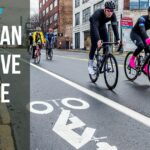For many, cycling isn’t just a mode of transportation – it’s a freedom machine, a chance to weave through cityscapes and countryside alike. But what happens when that adventurous spirit stumbles upon a cryptic symbol painted on the asphalt? Suddenly, the liberating breeze carries a whiff of confusion: “What do the bicycle signs mean?!”
Fret not, intrepid pedal-pushers! This comprehensive guide is your key to deciphering the language of the road, empowering you to navigate the asphalt jungle with confidence. Let’s dive into the fascinating world of what bicycle signs mean!
Stop Sign
The stop sign is one of the most ubiquitous and well-recognized road signs. But its meaning should not be taken for granted by cyclists. A stop sign legally requires a complete cessation of movement in order to check that the intersection is clear before proceeding.
Simply rolling through a stop sign on a bike is illegal in many places, carrying fines up to $350 plus demerit points in regions like Australia. Even where rolling stops are tolerated, failing to fully stop poses safety risks if crossing traffic is not visible.
So as a responsible cyclist, come to a complete stop at every stop sign. Check left, right, and ahead for crossing traffic. Proceed only when the coast is clear. This prevents accidents and avoids fines, keeping your ride both safe and budget-friendly. The few extra seconds spent making sure a safe crossing is time well invested.
Sharrow
The “sharrow,” also known as a shared lane marking, depicts the outline of a bicyclist inside a house-shaped graphic painted on the road surface. This multifunctional road marking communicates several key messages:
First, it indicates the ideal positioning for cyclists within the lane. Guiding riders away from parked cars reduces the risk of being struck by an opening door.
Second, sharrows mark the proper direction of travel when used on two-way streets.
Third, they remind drivers that bicycles share the roadway space even when bike lanes are unavailable.
Overall, sharrows aim to promote visibility, raise driver awareness, and foster a spirit of cooperation among all road users.
While sharrows should provide confidence for cyclists on roads without dedicated bike lanes, their presence is not super important. On unmarked roads, cyclists simply position themselves prudently based on traffic conditions. So don’t let the absence of sharrows deter you from navigating safely!
Bicycle Boulevards
Bicycle boulevards, also called neighborhood greenways, are designated cycling routes along low-traffic streets. They utilize traffic calming elements to discourage cut-through vehicles and reduce speeds, creating optimized roadways for biking and walking over driving.
Typical features include speed humps, traffic diverters, intersection modifications, roundabouts, and signage. By intentionally guiding most motor vehicles elsewhere while limiting vehicle speeds for any remaining local access traffic, bicycle boulevards foster safer, calmer, greener neighborhood corridors.
Look for bike boulevard markings identical to sharrows or bike symbols you see confirming road sharing elsewhere. But here they indicate entry into a zone actively optimized for cycle travel through both infrastructure and policy. Within these friendlier confines, you can ride more easily, relaxed and protected from heavy traffic influences.
Bike Symbol on the Road
Solitary bike symbols painted on busy roads indicate vehicle-bike sharing zones. Unlike bike boulevards optimized specifically for bicycles, these Roads share equal priority between travel modes.
The markings simply call extra attention to the frequent presence of cyclists in the roadway space. Legally they provide no special rights or protections. But a thoughtful motorist may provide extra passing clearance where symbols appear.
Nonetheless, remain vigilant on share marked roads. Ride prudently, claim your position, signal turns, and leverage lower traffic alternatives when possible. Shared responsibility remains super important, paint or not. Let bike symbols guide your confidence on roads lacking bike infrastructure, not replace caution plying roads still dominated by cars.
Green Bike Lanes
At intersections where bikes and cars cross paths, standard white bike lanes may transition color – often green – for visibility. This eye-catching alert cautions drivers to yield, especially when turning across the bike lane.
For cyclists the color reinforces the lane’s constant presence and your legal right-of-way. But never presume drivers notice you regardless. Proceed carefully through green lanes at intersections, establish eye contact, signal intent, and pass only when clearly acknowledged.
Bike Boxes
Bike boxes are designated areas at intersection stop lines reserved for cyclists to queue in front of cars at red lights. This positioning makes cyclists more visible to drivers for turning conflicts.
When the light is red, bikes can occupy this painted reservable space ahead of the first vehicle. If unused, cars can also utilize this space, staying behind the first white line. On green, cars must yield before turning across the bike lane now occupied by waiting cyclists who get a head start visibility wise.
Colored Bike Sign Meaning
Colored bike signs and road markings indicate designated types of cycling routes:
- Green – Preferred, recommended bicycle routes and lanes, often scenic or low-traffic
- Blue – Bicycle-exclusive lanes and routes prohibiting other vehicles
- Yellow – Cautionary reminder of road sharing between bikes and cars
So while green invites cyclists onto welcoming suggested routes, blue restricts roads solely for bike use, and yellow warns bikes and cars to cooperatively coexist in shared spaces.
Restriction Bike Traffic Signs
The circular red sign with a bike symbol prohibits cycling access completely. This restriction applies equally to bicycles as full vehicle prohibitions.
However, a plain red circle signifies no motor vehicles, while still allowing bike and pedestrian access. So the presence and type of symbols inside the circle matters significantly – bikes are only restricted if specifically displayed.
Shoulders & Rumble Strips
Road shoulders running beside vehicle lanes legally permit bike usage, though cyclists are not required to use them. Shoulders offer refuge on busy roads. However, beware uneven maintenance and hazards like rumble strips.
Rumble strips are grooved pavement sections aiming to deter driver lane departures. But slots and ridges can catch bike wheels, so maintain caution navigating shoulders around strips. Look for periodic shoulder entry/exit gaps allowing safe cycling access across rumbles.
Roundabouts
Cyclists can navigate roundabouts either as motorists, taking full lanes in circulation, or as pedestrians using crosswalks. Taking the lane makes bikes more visible and prevents unsafe car passing. Using crosswalks requires dismounting to walk bikes through. Choose based on traffic speeds, volumes, and personal comfort levels.
As we’ve explored, bicycle signs and road markings construct a rich language that guides cyclists safely through the concrete jungle. By decoding their “sign sense”, riders can navigate any streets from quiet neighborhoods to bustling intersections. So next time you encounter an unfamiliar bicycle symbol, remember the lessons from this Refried Cycles guide to uncover its meaning. Let the signs direct your journey so you can discover the freedom of the open road! What the bicycle signs mean is the first step to confident cycling wherever your handlebars take you.

















